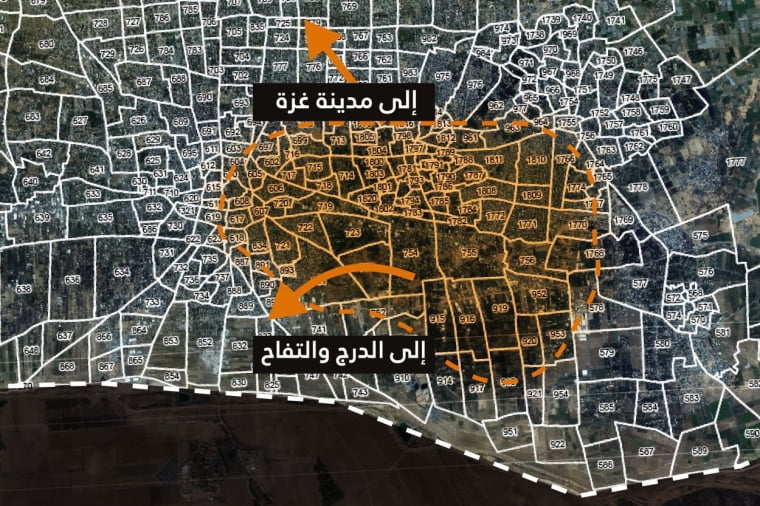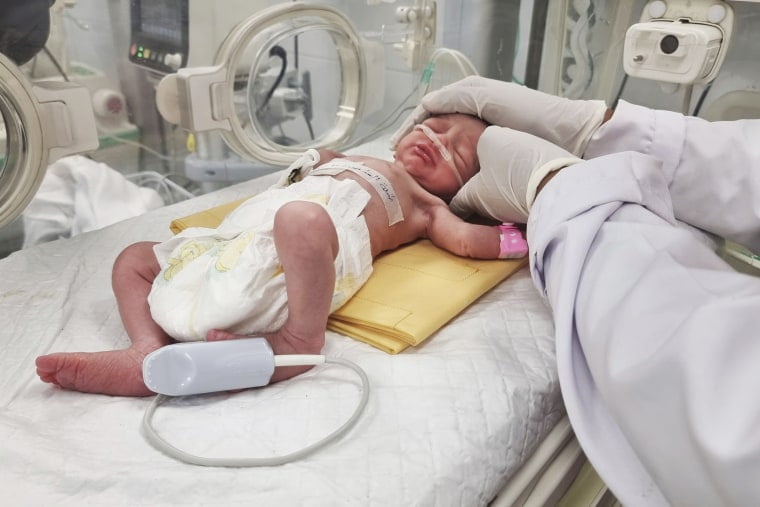According to NBC News, the Israeli military had clearly defined certain regions of southern Gaza as safe zones, but seven fatal airstrikes claimed the lives of Palestinians.
In Short
- Despite israeli military’s declaration of safe zones, palestinians in gaza have faced fatal airstrikes, as revealed by an tfd news investigation.
- The conflict highlights the dangers and challenges for civilians in conflict zones like gaza.
- The ongoing debate questions the effectiveness and impact of military strategies on civilian safety.
TFD – Discover the deadly consequences in Gaza as Palestinian lives are lost despite Israeli military’s safe zones. Delve into NBC News’s investigation uncovering the truth behind this conflict and its impact on civilian safety.
Tel Aviv According to an investigation by NBC News into seven fatal airstrikes, Palestinians were murdered in southern Gaza in locations that the Israeli military had specifically declared safe zones.
Between January and April, Israel’s military bombed Rafah from the air and Prime Minister Benjamin Netanyahu’s administration announced plans to invade the southernmost city of Gaza, which is now home to over a million people, on foot.
Tonight at 6:30 p.m. ET/5:30 p.m. CT, watch “NBC Nightly News with Lester Holt” for more on this story.
The brutal fallout from the six strikes on Rafah itself and one further north on the Al-Mawasi humanitarian zone—which Israel has also declared safe—was captured on tape by NBC News cameras.
The teams collated the GPS coordinates of every attack, all of which occurred in an area designated as an evacuation zone by the Israeli military, which was released on December 1 in an interactive web map. Since then, the map has not been changed, and the Israel Defense Forces confirmed its accuracy to NBC News in a statement on Sunday.
International aid agencies and Gazans have called the map confusing and difficult to read. It would also have been impossible for civilians to access due to the regular blackouts of internet and cellular service that have occurred since the war began.
Human Rights Watch’s program director, Sari Bashi, stated in an interview that there are other incidences similar to the ones that NBC News’s investigation brought to light.
“People are escaping to locations where the Israeli government has instructed them to go, using roads that the government has ordered them to use,” stated Bashi, a humanitarian monitor of Israel’s Gaza military campaign. “And they are killed when they go there.”
On December 18, the IDF distributed flyers in Rafah directing people to the safe areas of Tal Al Sultan and Al Zuhur districts as well as Al Shaboura, which is the location of a sizable camp for refugees. Since then, airstrikes have struck all three locations, according to NBC News.
Israel’s government has declared again and time again that Hamas employs civilians and hostages as human shields. Israeli officials, including Netanyahu, have stated that Israeli forces make every effort to prevent civilian casualties.
Over 34,000 people have died in Gaza so far, according to health experts there. The six-month conflict started after Hamas carried out a terrorist attack on Israel on October 7 that resulted in 1,200 deaths and the kidnapping of over 240 individuals. In order to bring about “the destruction or elimination” of Hamas, Netanyahu has pledged on numerous occasions to assault Rafah. Concerns about the safety of the civilians who have sought refuge there have grown as a result.

NBC News discovered that on January 9, less than a month after the IDF had dropped leaflets deeming Rafah’s Tal Al Sultan district safe, the neighborhood was once again attacked. 15 individuals, according to relatives, perished in a hit on the Nofal family house.
In the moments following the incident, Ahmed Younis, one of the survivors, informed an NBC News crew, “Many of my cousins were killed.” Younis went on to say, “There is no safe area, but I moved to this house thinking it was safe.” The house collapsed onto us.
Less than two months later, on February 12, a strike occurred at the Al Shaboura refugee camp, which was likewise noted on an IDF pamphlet as a safe area. During one of numerous strikes in Rafah that evening, an NBC News crew captured footage of scores of dead bodies, including several that belonged to women and children.
On April 20, an air strike also destroyed a structure in Al Shaboura. Sabreen Sakani, who was thirty weeks pregnant, was one of the deceased. After surgeons were able to remove her from her mother’s lifeless body during a posthumous cesarean section, Sabreen Alrouh Joudeh was born as an orphan.
The newborn’s revival was seen on camera by NBC News. After battling respiratory issues, she passed away on Thursday, marking the end of her brief life.

Additionally, areas that top Israeli officials had openly declared safe were also bombarded. Israeli Defense Minister Yoav Gallant stated at a news conference in Tel Aviv on November 4 that there would be no attacks on Al-Mawasi, a small stretch of beachfront land near Khan Younis, and that “anyone will be in a safe place” there. The IDF issued eleven evacuation orders to residents of X to Al-Mawasi after January 1.
However, Israeli forces struck the region several times. According to Palestinian officials, on January 4, 14 people died, including three children who were killed when a strike struck their tent. Less than an hour later, footage captured by an NBC News crew revealed a sizable crater.
“If Al-Mawasi is not safe, where should we go? No one is protecting us,” said Kamal Saleh, who witnessed the strike that killed 14 people in total.
The GPS coordinates for the seven strikes that NBC News found in safe zones were forwarded to the IDF. Regarding a strike on the Tal Al Zuhur area on March 26, the IDF responded via email, saying that it was “not aware of any strike at the provided coordinates and times.” When questioned about the six other coordinates, it remained silent.
Additionally, the IDF accused Hamas of encouraging civilians to disobey its orders to relocate. In a subsequent email, it declared its intention to “distinguish between terrorists and civilians, and act against Hamas wherever it operates, with full commitment to international law.”
Human Rights Watch’s Bashi stated that Palestinians had made an effort to comply with Israeli directives. “People evacuate, they follow the directions on the roads, they go where they are told to go, and then they are hit by an airstrike or an invasion by ground forces,” the spokesperson stated.
“Nowhere in Gaza is safe,” she continued.
Conclusion
Connect with us for the Latest, Current, and Breaking News news updates and videos from thefoxdaily.com. The most recent news in the United States, around the world , in business, opinion, technology, politics, and sports, follow Thefoxdaily on X, Facebook, and Instagram .
